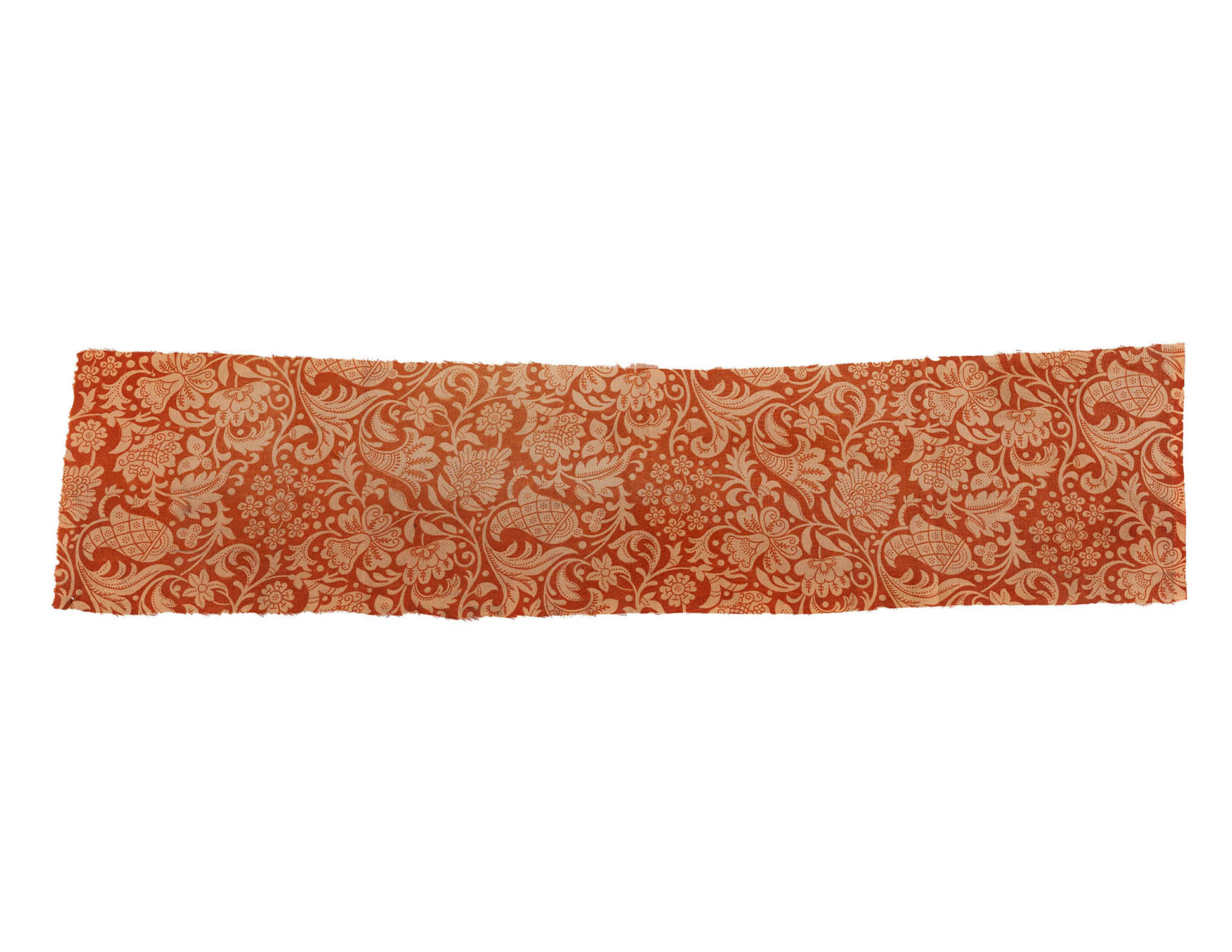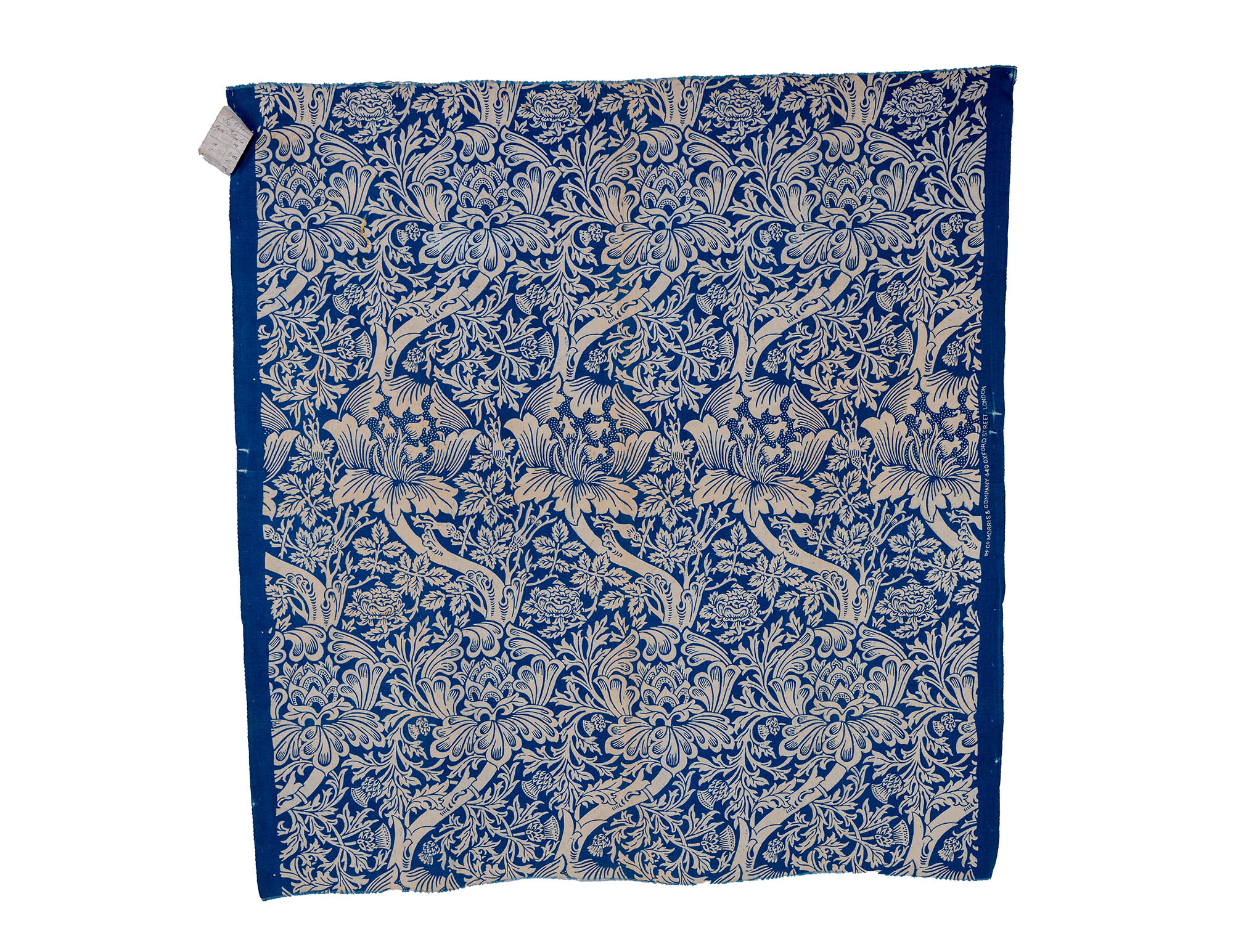#2 Arts & Crafts
The Arts & Crafts movement in Britain showed the tension between the agricultural past and industrial present. It developed throughout the 19th century as a backlash to the industrialisation of art and design, championing handcrafts and imagery inspired by the natural world, as well as folk art and medieval methods and symbolism. While some key voices in the movement such as William Morris railed against factory-made products, others such as Lewis Foreman Day were happy to create designs for industrial use, believing they should be affordable to all. The Arts & Crafts textiles in the Gawthorpe collection show that inspiration was also drawn from design from around the world.

This sample of cretonne curtain weight fabric, designed by Lewis Foreman Day for Lancashire-based printers Turnbull and Stockdale, shows his keen interest in Indian chintz.
In his book, Some Principles of Everyday Art, republished in 1890, Lewis Foreman Day wrote, “Of modern ornament the most perfect is that which is not modern, that is to say, such Indian, Persian, Japanese or other Eastern art, as is traditional, and has changed little or not at all for centuries.” This gives a false sense of permanence to design from non-European countries which in reality were also subject to change due to developments in technology, taste, fashion, and influence from other cultures. It also illustrates the intense interest in Asian design throughout the Arts & Crafts movement.
c.1870-1900

Lightweight cotton furnishing fabric called ‘Salangore’, designed by Thomas Wardle for Liberty.
The Victoria & Albert Museum has a sample of this design in blue, printed onto tussah silk hand-woven in India, which was exhibited in the British India Pavilion of the Paris Universal Exhibition of 1878. One of six Indian-inspired patterns at the exhibition, it showed the continuing influence of Indian design in Britain throughout the 19th century, as well as the place of stores like Liberty in popularising these designs.
c.1878

William Morris was a designer and craftsman, poet, novelist and socialist, and the leading voice of the Arts and Crafts movement. Here, his interest in botanical imagery, medieval arts and chintz florals is evident in this ‘Rose and Thistle’ design for furnishing fabric, bought from Morris & Co.’s shop, 9 Oxford Street, London.
Designed before 1881
